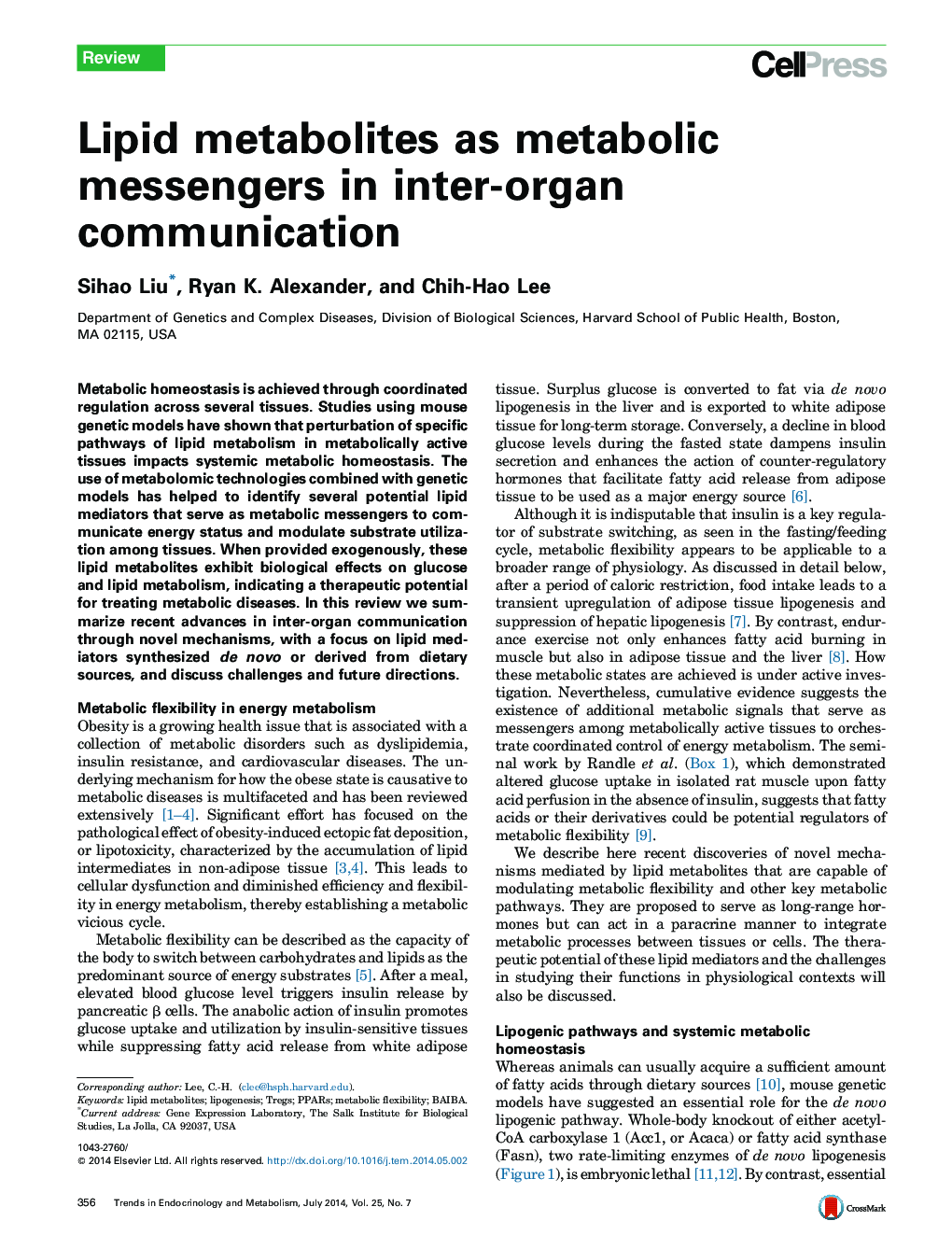| Article ID | Journal | Published Year | Pages | File Type |
|---|---|---|---|---|
| 2810237 | Trends in Endocrinology & Metabolism | 2014 | 8 Pages |
•Metabolites of key lipogenic pathways generate long-range metabolic messengers.•Several lipid metabolites are shown to coordinate energy metabolism among tissues.•Novel mechanisms of tissue crosstalk are identified through these lipid metabolites.•Lipid mediators provide new therapeutic opportunities to treat metabolic diseases.
Metabolic homeostasis is achieved through coordinated regulation across several tissues. Studies using mouse genetic models have shown that perturbation of specific pathways of lipid metabolism in metabolically active tissues impacts systemic metabolic homeostasis. The use of metabolomic technologies combined with genetic models has helped to identify several potential lipid mediators that serve as metabolic messengers to communicate energy status and modulate substrate utilization among tissues. When provided exogenously, these lipid metabolites exhibit biological effects on glucose and lipid metabolism, indicating a therapeutic potential for treating metabolic diseases. In this review we summarize recent advances in inter-organ communication through novel mechanisms, with a focus on lipid mediators synthesized de novo or derived from dietary sources, and discuss challenges and future directions.
